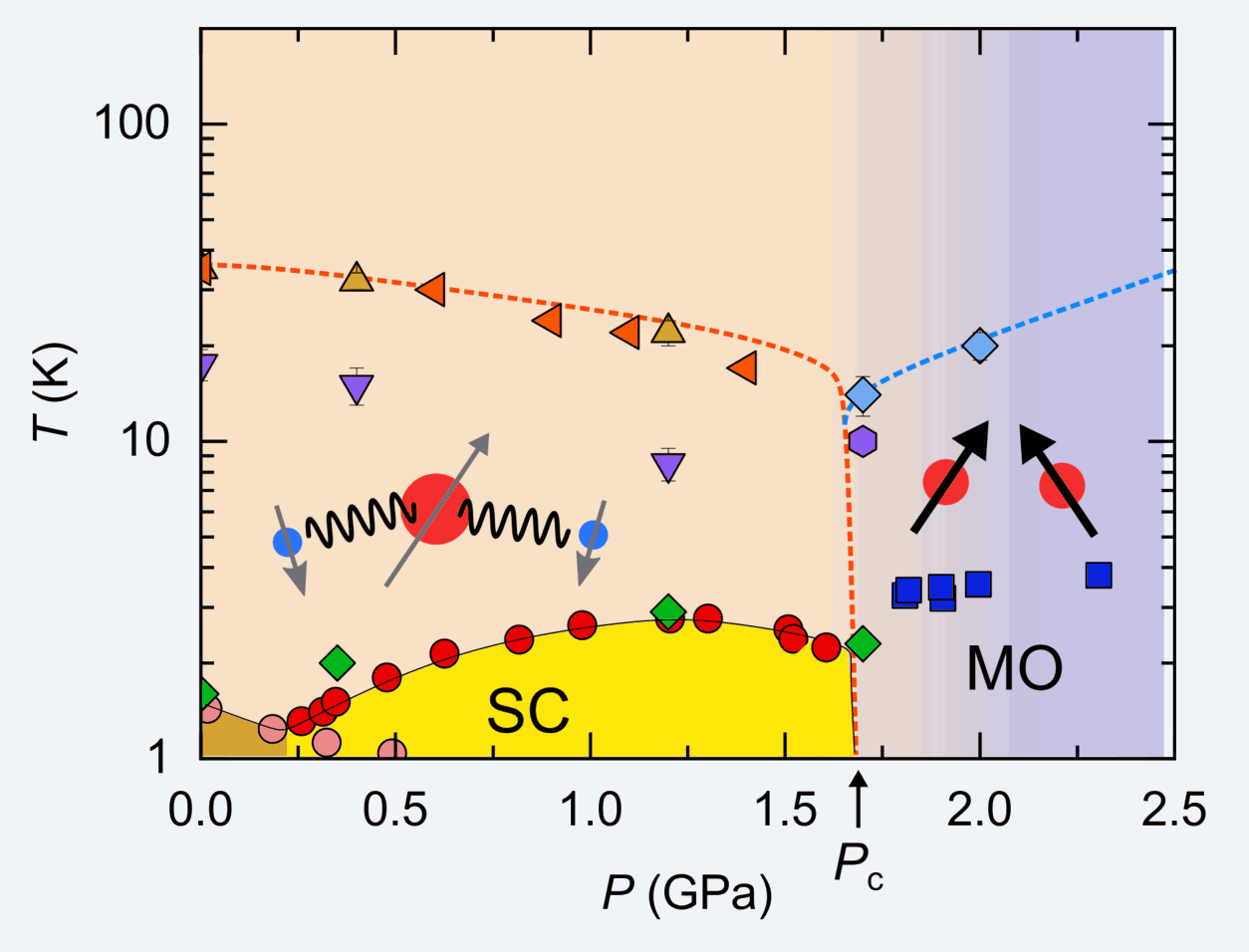To investigate the normal-state magnetic properties of UTe 2 under pressure, we
perform 125 Te nuclear magnetic resonance (NMR) measurements up to 2 GPa.
Below 1.2 GPa, the b -axis NMR Knight shift shows a broad maximum at the so-
called T χ max on cooling, which is consistent with the magnetization
measurement under pressure. T χ max decreases with increasing pressure and
disappears at the critical pressure P c = 1.7 GPa, above which superconductivity
is destroyed. This tendency is also observed in the temperature dependence of
the nuclear spin-lattice relaxation rate 1 / T 1 . At low pressures, 1 / T 1 shows a
conventional Fermi-liquid behavior ( 1 / T 1 T = const ) at low temperatures,
indicating the formation of the heavy-fermion state. Above P c , 1 / T 1 T follows
a 1 / T behavior without any crossover to the heavy-fermion state down to the
lowest temperature ( ∼ 3 K). In addition, the NMR signals disappear below 3 K,
due to the influence of the magnetically ordered moments. From the pressure
dependence of the T χ max and Knight shift, it was found that the Fermi surface
character is abruptly changed at P c , and that superconductivity is observed
only in the heavy-fermion state.
These findings are published in 6th Apr. 2022 in Physical Review B, and chosen
as “Editors’ suggestion.”
https://doi.org/10.1103/PhysRevB.105.L140502
![]()
